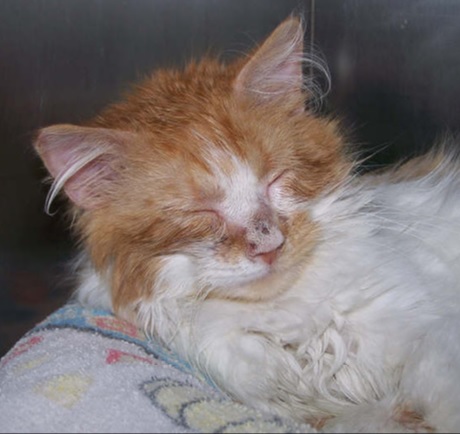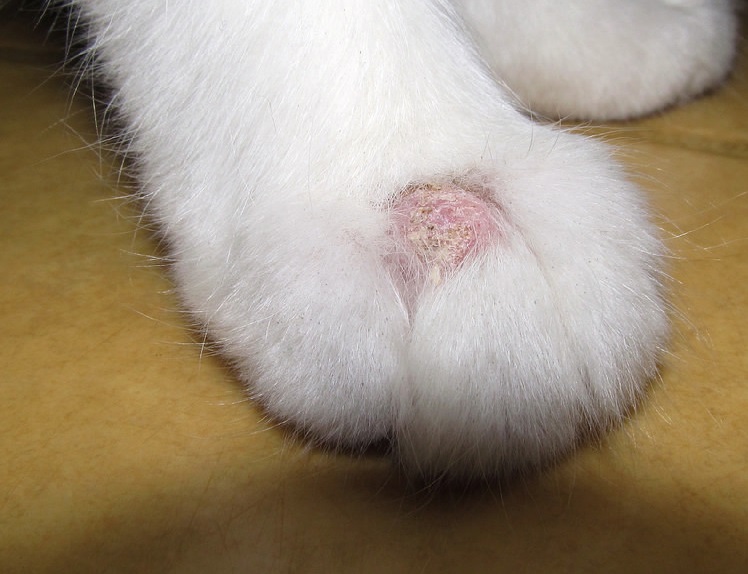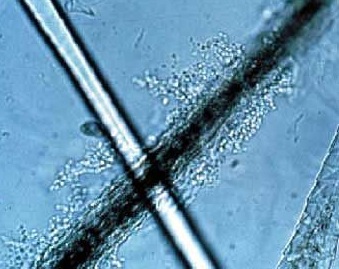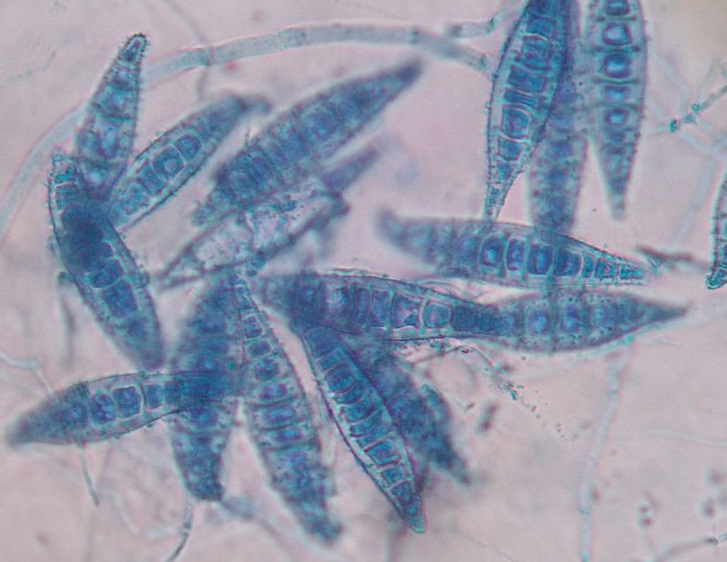Pet Case Study: “Sugar” Cat Hair Loss Solved

Sugar had small circular areas of hair loss on the white portion of her nose.
Sugar is a 10 month old female spayed domestic cat. She was adopted from the local animal shelter about 1 month ago. Shortly after adoption, Sugar developed hair loss from the face and paw. She presented to ADRC for Dr. Seals to evaluate. The affected skin had areas of scaling and appeared irritated. During the examination, the owner pointed to a skin spot on her own left arm. The sore was circular, red, raised, and itchy. Because both Sugar and the owner were affected, Dr. Seals suspected that ‘ringworm’ was the cause of the reported skin changes. Samples from Sugar’s skin were further collected and evaluated by Dr. Seals and, it was recommended that the owner go to a human dermatologist for evaluation and treatment.

Sugar had a large circular area of hair loss on the paw.
A circular area of hair loss was noted on the front paw with yellowish scaling present on the skin. The surrounding hairs were broken. Hairs were plucked from the affected areas to look for organisms clustered around the hair shafts.

Numerous clear circular organisms surrounding a pigmented hair shaft
One hair shaft with numerous small, clear, circular organisms were present. These organisms are called ectothrix and are created by the ringworm. However, these echtothrix are not specific for the type of ringworm as there are numerous different types. So, additional samples of the hair and skin were collected for a DTM culture. This type of testing is needed because ringworm is not a worm at all but a fungus that infects hair shafts. The culture helps Dr. Seals isolate and identify the species of ringworm in order to appropriately treat and cure the infection.

The above culture isolated Microsporum canis. You can see the multiple oval shaped macroconidia that are used to identify this species of ringworm.
The ringworm Microsporum canis was isolated from the culture. This is a common infection of cats, dogs, and is considered highly contagious to people. We see it more commonly in kittens, puppies, patients without a strong immune system, and long haired cats. Affected individuals usually have one or multiple circular, irregular, areas of hair loss with variable scaling. The surrounding hairs may be broken and one or more of the claws may be affected causing a discoloration or abnormal shape. This condition is usually contagious from one infected pet to another. With increased exposure, like in a shelter type situation, animals can develop this infection.
The treatment usually requires a combination of systemic antifungals and topical therapies. Environmental decontamination is important to prevent a future infection and to prevent an infection of a person. This is because an infected hair can remain contagious for over a year. So, capturing and removing infected hairs by bathing the patient, vacuuming, and removing loose hairs from the household is important. Disinfecting surrounding hard surfaces will also decrease environmental contamination.
For Sugar, after receiving the appropriate treatment the infection resolved. Now she is a happy and healthy cat!

If you have questions about a pet with similar skin changes in your household please contact ADRC to schedule an appointment.
- May, 21, 2019
- Case Studies

